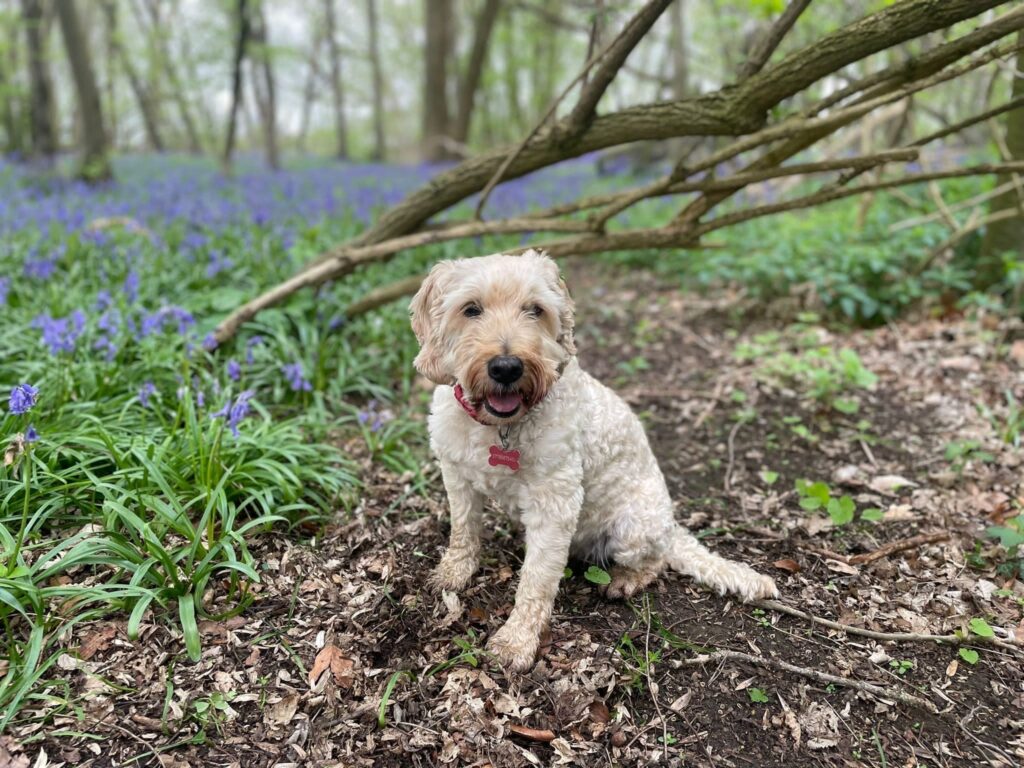“Until one has loved an animal, a part of one’s soul remains unawakened.” Anatole France
Having recently agreed to become a guide dog boarder for ‘The Guide Dogs for the Blind Association’ (see the lovely picture of ‘Ushka’ above), I wanted to give advice to London Leaseholders who also wish to keep a dog in their flat and aren’t sure of the process.
What does my Lease says?
Typically your Lease will state that ‘No bird animal or reptile is allowed without consent from the Landlord’. This means that you need to get the necessary signed permission before you decide to bring a dog into your flat. This will prevent a breach of your Lease and the dog having to be removed.
Why would I want a dog?
We all know that most dogs are cute and loving, but you may not know that they also provide health benefits such as:
- Lowering blood pressure
- Reducing anxiety
- Reducing the symptoms of depression
- Lowering the chance of pet allergies
What’s the process?
The first stage is a self-assessment. Before asking Strangford to contact the Landlord asking for permission to have a dog, you should ask yourself a few questions to see if you can accommodate one. It would be wise to consider these questions:
- Would a dog suit your lifestyle – consider the time required to care for a pet.
- Is your flat suitable – take into consideration the size and facilities such as outdoor space
- The cost of a dog – insurance, food, medical, accessories. The costs do add up.
If you have already cleared the first stage then the second stage is to apply to your Strangford Property Manager who will in turn ask for written permission from the Landlord. Your Strangford Property Manager will need the following information to consider your application:
- Name
- Age
- Breed
- Form of training
- Details of emergency contact for the dog
- Confirmation of house rules agreement
This brings us nicely onto the house rules. With every agreement there must be stipulations that, if broken, can allow permission to be revoked. Each freeholder may have different stipulations but typically they will include:
- No fouling in common areas
- Should barking persist then permission may be removed
- Dog to be kept on a lead throughout common areas
- The dog must in line with all animal welfare laws
Animal Welfare Laws:
There are a number of legal acts that protect animals and the public with the main one being the Animal Welfare Act 2006. This legally requires an individual to have a duty of care when keeping a pet. Basic requirements of this act state that pets should be provided with a proper diet, a suitable home and protection from pain, suffering, injury and disease. Other notable acts include Dogs Act 1871, Control of Dogs Order 1992, Environmental Protection Act 1990 and Clean Neighbourhoods and Environment Act 2005. It is worth reading these acts before getting a dog, just to make sure you have all the necessary information you need before making this lifestyle decision.
Top 6 Breeds of Dog for Flat Living:
In order to help with your decision we wanted to give some guidance on the type of dog breeds that would suit a flat given that there is likely to be less space and possibly no external areas available.
British Bulldog:
Typical Size: 12 – 16 Inches (short and wide)
Typical Weight: 24 – 25 kilograms
Life Expectancy: approximately 8 years
Daily requirements: British Bulldogs are quite inactive generally, only requiring a daily walk.
Cavalier King Charles Spaniel:
Typical Size: 12 – 13 Inches
Typical Weight: 5 – 8 kilograms
Life Expectancy: approximately 12 years
Daily requirements: a daily walk is suitable as they can be quite playful therefore getting a lot of exercise from ongoing playing.
Pug:
Typical Size: 10 – 14 Inches
Typical Weight: 13 – 20 kilograms
Life Expectancy: approximately 14 years
Daily requirements: much like the Cavalier King Charles Spaniel, a daily walk is suitable as they too get a lot of exercise from playtime being quite an energetic dog.
Yorkshire Terrier:
Typical Size: 6 – 7 Inches
Typical Weight: 3 – 4 kilograms
Life Expectancy: approximately 12 years
Daily requirements: Terriers are very active dog so it’s recommended that two daily walks and regular play time should suffice.

Cockapoo:
Typical Size: 12 – 16 Inches
Typical Weight: 10 – 15 kilograms
Life Expectancy: Generally around 12-16 years
Daily requirements: Can adjust to flat or apartment life as long as they get the exercise they need each day – a minimum of 15 minutes of exercise a day, but more is always better.
Mastiff (bear with us!!):
Typical Size: from 30 Inches up
Typical Weight: from 72 kilograms up
Life Expectancy: approximately 10 years
Daily requirements: We know that Mastiff’s are large dogs BUT they are seen as lazy dogs at times. Regular walks are required but generally they are calm and relaxed whilst in a flat.0
Summary:
Whilst it may seem that getting a dog is a good idea, it is certainly not an impulse decision, especially when living in a flat. Take all of the above into consideration before contacting your Strangford Property Manager and the process to get your dog can be straightforward and easy.
Related: 10 Legal rights you have as a Leaseholder…..but may not know about









